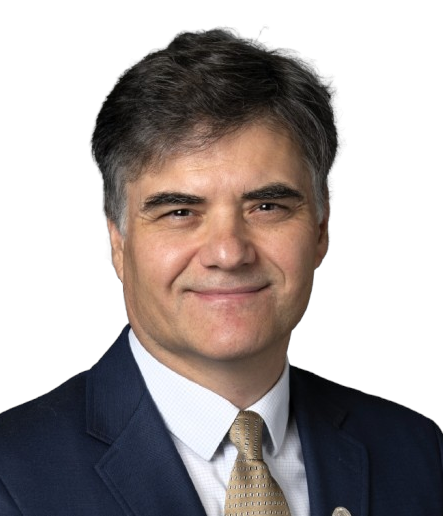Pavel Nadolsky
Wu-Ki Tung Professor, Department of Physics & Astronomy
Location: 3211 Biomed Phys Sci
Phone: 517-884-5613
Email: nadolsky@msu.edu
CV: Download CV
Bio
I am a scientist working on theoretical physics of elementary particles, which explores physical objects at tiniest distances accessible to modern science. We study the most basic forces existing in nature and microscopic events that drive the evolution of the Universe since its very beginning. My recent efforts focus on predicting quantum interactions at the [Large Hadron Collider](http://public.web.cern.ch/Public/en/LHC/LHC-en.html) near Geneva, Switzerland and at the planned [Electron-Ion Collider](https://www.bnl.gov/eic/) at the Brookhaven National Laboratory in USA. I develop theoretical models to explain how particles are produced through [strong](http://en.wikipedia.org/wiki/Strong_interaction) and [electroweak](http://en.wikipedia.org/wiki/Electroweak_interaction) interactions. Scientists apply these models to understand observations at particle colliders — the largest microscopes ever built — and to search for [Higgs bosons](http://en.wikipedia.org/wiki/Higgs_boson) and novel types of particles and forces. I am also interested in understanding how composite protons, neutrons, and other hadrons are formed as bound states of quarks and gluons. I participate in the development of widely used [CTEQ-TEA (CT)](http://ct.hepforge.org/) parametrizations of [parton distribution functions](http://en.wikipedia.org/wiki/Parton_%28particle_physics%29#Parton_distribution_functions) as a member of [CTEQ](http://www.cteq.org/) collaboration. I view myself both as a theoretical physicist making predictions for particle experiments and, increasingly, as a [data physicist](https://www.aps.org/apsnews/2023/10/rise-of-data-physicist) who interprets elaborate data sets from experimental measurements using a fusion of traditional statistics and predictive analytics based on AI/ML and other multivariate techniques. While the LHC searches for answers about the fundamental laws of nature, it is also a frontier lab to develop and test new statistical methods to learn from the results of numerous, complex LHC observations. Examples of my work in this area include uncertainty quantification in precision measurements involving parton distributions, Monte-Carlo and optimization methods for multidimensional problems, replicability and reproducibility of large-scale particle data analyses. * Research interests: elementary particle phenomenology in the Standard Model and beyond; perturbative computations and factorization methods in quantum chromodynamics; statistical applications for high-energy physics. * [An elementary introduction to particle physics](http://particleadventure.org/)
Courses
- PHY 905: Special Problems
Selected Publications
- Pavel Nadolsky's profile in Google Scholar View Publication
- Pavel Nadolsky's publications in INSPIRE HEP database View Publication
